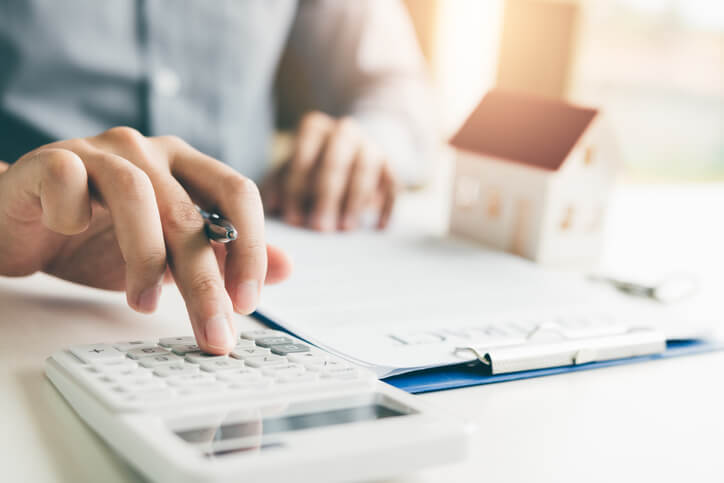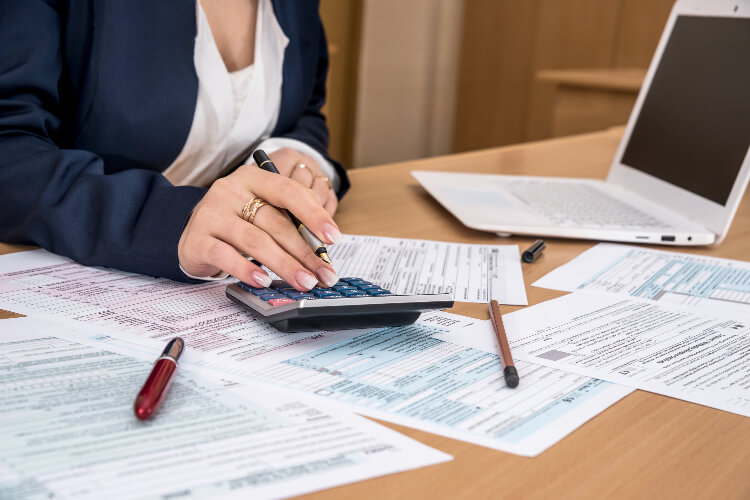Real estate investors purchase rental property for the cash flow the property’s rent roll will generate. A real estate pro forma is used by buyers and sellers to project the potential internal rate of return (IRR) of a rental property and to get the best purchase price possible.
In this article, we’ll discuss how a pro forma in real estate works, explain how buyers and sellers use a pro forma income statement, and review other key rental property financial metrics that rely on having an accurate pro forma cash flow statement.
What Does Pro Forma Mean?
If you studied Latin in school then you already know what pro forma means. But for the rest of us, pro forma means “as a matter of form” or “for the sake of form.” In real estate, investors use a pro forma to determine what the income, expenses, potential revenue, and net operating income of a property should be or could be.
When you buy a rental property already occupied by a tenant from a platform like Roofstock, you already know what the current financial performance of the home is.
Or you may be purchasing a property directly from an owner in a private-party transaction. If that’s the case, the odds are the seller is using Stessa instead of an Excel spreadsheet to keep track of rental property income, expenses, and other deductions to generate accurate financial reports such as income statements and net cash flow reports.
But what if you’re investing in a home that has never been rented before and want to know what your future equity might be? Or you’re purchasing a value add property and want to make sure you can generate enough potential rental income by raising the rent to market rates to pay for the cost of updating and capital expenditures?
In situations like these, real estate investors use a pro forma to better forecast income and expenses and project future potential profits.

Why Pro Forma in Real Estate is Important
GIGO is an acronym for “garbage in, garbage out.” In computer science, GIGO refers to the fact that if input data is flawed, the output will be complete nonsense or garbage. That’s why real estate investors use a pro forma to make sure their financial projections are as accurate as possible.
The pro forma statement contains two important pieces of data: Cash flow projections and net operating income (NOI). NOI and cash flow are used in other key investment property formulas such as ROI (return on investment), cash-on-cash return, and cap rate.
If a pro forma has the wrong NOI or cash flow, an investor could end up overpaying for an underperforming property or taking a pass on a good investment that another investor grabs because they put together their pro forma correctly.
How to Create a Pro Forma for Real Estate
Here’s how to create a basic monthly pro forma for real estate:
Property price = $150,000
- Projected gross rental income = $1,500
- Vacancy loss at 5% = $75
- Effective gross income = $1,425
- Repairs at 5% = $75
- Property management fees at 8% = $120
- Other expenses (utilities, pro rata property tax, insurance, reserves, etc.) = $300
- Projected monthly cash flow or NOI = $930
After you’ve calculated the pro forma cash flow or NOI, the next step is to add in your monthly mortgage expense to determine your before-tax cash flow:
- NOI = $930
- Mortgage expense debt service = $476 (principle and interest only)
- Before tax cash flow = $454 per month

Why Buyers & Sellers Use a Pro Forma
Buyers and sellers use a pro forma to create different “what if” scenarios.
For example, if you are selling a property, a pro forma can be used to predict the change in NOI and property value if the vacancy rate increased from 5% to 10%. Or if you’re purchasing a value add property that requires $20,000 in updating costs, you can use a pro forma to forecast how quickly the renovation expense would be repaid if you increased rents by 5%, 10%, or 15%.
Seller’s Pro Forma
Sellers who want to sell their property at the highest possible price can use a pro forma to make it look like the property is generating as much cash flow and NOI as possible. They do that by creating a simplified pro forma statement that may overlook important operating expenses such as property management fees or vacancy loss.
That doesn’t necessarily mean the seller is being deceptive because they could be self-managing their rental property. But if you’re a remote real estate investor you’ll definitely need the services of a property manager.
Let’s look at two basic pro forma statements for a single-family rental property worth $150,000, with and without an 8% property management fee factored in, and the impact on NOI:
Income
- Potential gross rental income = $18,000
- Vacancy loss at 5% = <$900>
- Effective gross income = $17,100
Expenses
- Repairs at 5% = $900
- Property management fees 8% = $1,440
- Other expenses (such as utilities, property taxes, insurance, leasing fee, reserves) = $3,600
- Total expenses = $5,940
- Net operating income (NOI) = $11,160
Cap rate = NOI / Market value = $11,160 NOI / $150,000 Market value = 0.074 or 7.4%
As a remote real estate investor you would expect a cap rate of 7.4% with the property management fee factored in, based on the above pro forma.
However, if the seller omits the property management expense the NOI would increase by $1,440 to $12,600 with the seller claiming the property has a cap rate of 8.4%:
$12,600 NOI / $150,000 Market value = 0.084 or 8.4%
Buyer’s Pro Forma
Now let’s assume you’re purchasing the same property, but there is a significant amount of deferred maintenance the current owner wasn’t able to make. Your local contractor has told you the property needs $10,000 in repairs. Based on the rent comparables you predict you’ll be able to raise the rent by 20% after the property is fully renovated.
Creating a pro forma will tell you how long it should take to pay for the repairs based on the increase in NOI:
- Potential gross rental income = $18,000 + 20% = $21,600
- Vacancy loss at 5% = <$1,080>
- Effective gross income = $20,520
Expenses
- Repairs at 5% = $1,080 (excluding the one-time renovation expense)
- Property management fees 8% = $1,728
- Other expenses (such as utilities, property taxes, insurance, leasing fee, reserves) = $4,320
- Total expenses = $7,128
- Net operating income (NOI) = $13,392 new NOI – $11,160 old NOI = $2,232 additional NOI
Based on the above pro forma, it will take about 4 ½ years to pay for the renovation expense with the increase in NOI. However, in reality, it will actually take less time, because you predict that you will be able to increase your rent by 6% each year.
We can create a very simple pro forma to calculate how the NOI increase will change when the rent is raised each year:
- Year 1 = $2,232 NOI (net difference between NOI before and after renovation)
- Year 2 = $2,366
- Year 3 = $2,508
- Year 4 = $2,658
- Year 5 = $235 per month
Based on the above pro forma for the change in NOI factoring an annual rent increase, the renovation expenses of $10,000 would be paid for in 4 years and 1 month.

Why an Accurate Pro Forma is Important
Numerous rental property financial performance metrics such as cap rate, cash-on-cash return, and ROI (return on investment) depend on calculating accurate NOI and cash flow.
Let’s look at how to calculate each of these metrics, assuming an investor finances a property with a market value of $150,000 using a 25% ($37,500) down payment with a monthly mortgage payment of $454 (principle and interest), and earns an NOI of $11,160 per year:
#1 Cap rate
- Cap rate = NOI / Market value
- $11,160 NOI / $150,000 Market value = 7.4% pro forma
#2 Cash-on-cash return
- Cash-on-cash return = Before tax cash flow / Total cash invested
- $5,448 before tax cash flow / $37,500 total cash invested (down payment) = 14.5% pro forma
#3 ROI
To calculate the pro forma return on investment (ROI) we’ll assume the property is held for five years. According to Zillow, home values in the U.S. have increased by about 32% over the past five years. Based on this historical average, we predict the home will have a market value of $198,000 when it is sold:
- Before tax cash flow = $5,448 x 5 years = $27,240
- Gain on sale = $198,000 – $150,000 = $48,000
- Cost of investment = $37,500 original down payment
Using the data above, the pro forma ROI for the five-year holding period will be:
- ROI = (Gain on investment – Cost of investment) / Cost of investment
- Gain on investment = $27,240 before tax cash flow + $48,000 gain on sale = $75,240
- ROI = ($75,240 – $37,500) / $37,500 = 14.94% ROI pro forma, annualized
Final Thoughts on Pro Formas
A pro forma in real estate is used by investors to calculate what the net operating income (NOI) and cash flow from a property should be and could be.
Creating an accurate pro forma is critical because various rental property financial metrics such as cap rate, cash-on-cash return, and ROI (rate of return) all depend on a good pro forma analysis.
Using the wrong information in a pro forma could lead to overpaying for a property that underperforms, or missing out on a great opportunity to purchase a rental property.






